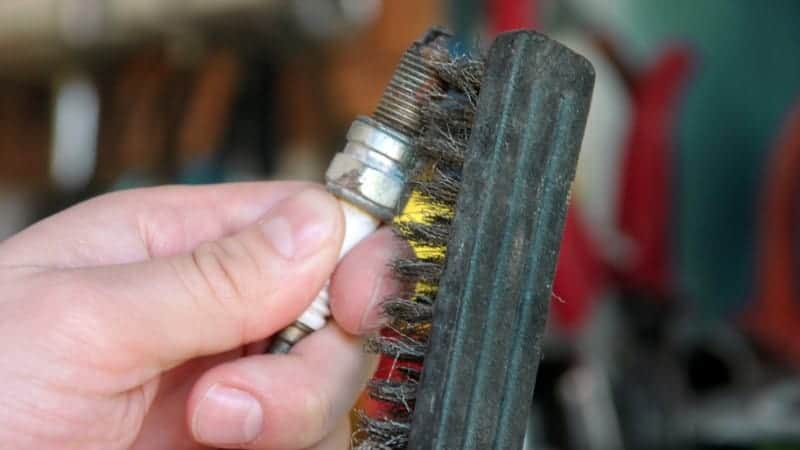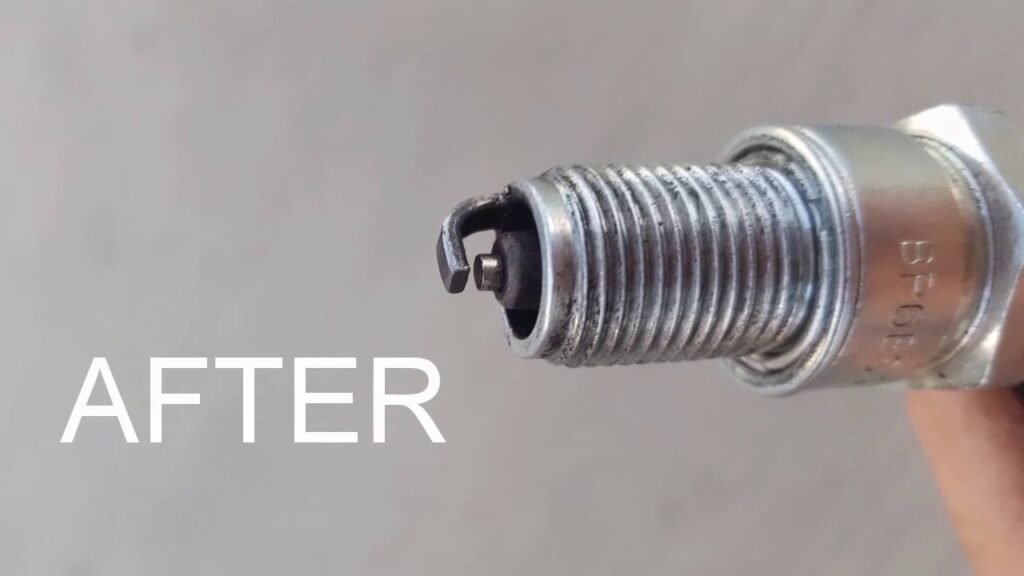Cleaning spark plugs with brake cleaner is an effective method for removing carbon, oil, and fuel deposits. Simply spray non-chlorinated brake cleaner on the spark plugs, scrub away any buildup with a wire brush, rinse, dry, and reinstall.
Spark plugs are essential components in the ignition system of any vehicle. Over time, they can become fouled with carbon, oil, or fuel deposits, leading to poor engine performance, misfires, and reduced fuel efficiency. Regular cleaning of spark plugs can help maintain your vehicle’s performance and prevent unnecessary repairs. One commonly used method for cleaning spark plugs is using brake cleaner.
In this guide, we will explore how to clean spark plugs using brake cleaner, discuss its effectiveness, safety precautions, and alternative cleaning methods.

Contents
- 1 What Are Spark Plugs and Why Do They Need Cleaning?
- 2 Can You Clean Spark Plugs with Brake Cleaner?
- 3 Step-by-Step Process for Cleaning Spark Plugs with Brake Cleaner
- 4 Safety Precautions When Cleaning Spark Plugs with Brake Cleaner
- 5 Alternative Methods for Cleaning Spark Plugs
- 6 Frequently Asked Questions
- 7 Conclusion
What Are Spark Plugs and Why Do They Need Cleaning?
Spark plugs are responsible for igniting the air-fuel mixture inside the combustion chamber of an engine. Over time, they can accumulate carbon, oil, and other debris due to combustion processes, leading to fouling. Fouled spark plugs can cause various problems, including:
- Engine Misfires: A spark plug that can’t generate a strong enough spark may cause the engine to misfire, which results in rough idling and decreased performance.
- Poor Fuel Efficiency: Dirty or worn-out spark plugs may not ignite fuel efficiently, leading to a decrease in gas mileage.
- Hard Starting: Fouled plugs can make it difficult for the engine to start, as they cannot produce a reliable spark.
- Excessive Emissions: When spark plugs don’t function properly, they can result in incomplete combustion, leading to higher emissions.
Regularly cleaning spark plugs can help prevent these issues and keep your engine running smoothly.
Can You Clean Spark Plugs with Brake Cleaner?
Yes, brake cleaner is often used to clean spark plugs, as it is effective at removing carbon, oil, and fuel deposits from the surface of the plugs. Brake cleaner contains powerful solvents that break down contaminants, and its fast-drying properties ensure that the plugs are ready for reinstallation quickly. However, it’s important to use brake cleaner correctly and follow proper procedures to avoid damaging the spark plugs or other engine components.
Types of Brake Cleaners
There are two main types of brake cleaners commonly used for cleaning spark plugs:
Non-Chlorinated Brake Cleaner: This type of brake cleaner is highly recommended for cleaning spark plugs, as it evaporates quickly, leaves no residue, and is less toxic. It is ideal for engine components since it will not harm rubber or plastic parts.
Chlorinated Brake Cleaner: While chlorinated brake cleaner is effective at dissolving grime and grease, it contains chemicals that can leave residues. This type of cleaner can be harmful if inhaled and should not be used near engine components where contact with rubber or plastics may occur.
Always opt for a non-chlorinated brake cleaner when cleaning spark plugs.
Step-by-Step Process for Cleaning Spark Plugs with Brake Cleaner
Cleaning spark plugs with brake cleaner is a straightforward process that helps restore their performance by removing carbon, oil, and fuel deposits. Follow these steps carefully to ensure a thorough and effective cleaning.
Materials Needed
Before you begin cleaning your spark plugs with brake cleaner, make sure you have all the necessary tools and products at hand. Having everything prepared will make the process smoother and more efficient.
- Non-chlorinated brake cleaner (Ensure you have the right type)
- Wire brush or spark plug cleaning tool
- Compressed air or clean lint-free cloth
- Protective gloves and eyewear
- Spark plug socket wrench
- Container for cleaning debris
Step 1: Remove the Spark Plugs
Before you start cleaning the spark plugs, it’s important to ensure the engine is cool. Working on a hot engine can cause burns or make the process more difficult. Disconnect the car battery to avoid any accidental starts. Using a spark plug socket wrench, carefully remove the spark plugs from the engine. Place them in a safe, clean area where you can inspect and clean them properly.
Step 2: Inspect the Spark Plugs
Before cleaning, visually inspect the spark plugs for any damage. If the electrodes are heavily worn, cracked, or the spark plug is corroded, cleaning won’t restore their function, and they will need to be replaced. If they appear dirty but structurally sound, they can likely be cleaned and reused.
Step 3: Apply Brake Cleaner
Spray a generous amount of non-chlorinated brake cleaner directly onto the fouled areas of the spark plug, such as the electrodes and insulator. Allow the cleaner to sit for a few minutes to dissolve any carbon, oil, or fuel deposits. Brake cleaner’s solvent properties will break down the buildup, making it easier to remove.
Step 4: Scrub the Spark Plugs
Using a wire brush or a dedicated spark plug cleaning tool, gently scrub the spark plug. Scrubbing in a circular motion can help remove any stubborn deposits that have stuck to the plug’s surface. Be careful not to apply too much pressure, as excessive scrubbing could damage the spark plug or misalign the electrode.
Step 5: Rinse and Dry the Spark Plugs
Once the spark plugs are cleaned, rinse them with clean water to remove any remaining cleaner or debris. Use compressed air to blow off excess water and debris, or wipe the plugs down with a clean lint-free cloth to dry them completely. Ensure that no cleaner remains on the spark plugs before reinstallation, as residue could negatively impact engine performance.
Step 6: Reinstall the Spark Plugs
Once the spark plugs are dry and free of any cleaning agent, reinstall them into the engine. Be sure to torque them to the manufacturer’s specifications. Over-tightening or under-tightening spark plugs can lead to engine problems, so proper installation is key.

Safety Precautions When Cleaning Spark Plugs with Brake Cleaner
While brake cleaner is an effective tool for cleaning spark plugs, it’s crucial to follow safety guidelines to ensure the cleaning process is done safely and without damaging any components.
- Work in a Well-Ventilated Area: Brake cleaner emits strong fumes, so always work in a well-ventilated area, preferably outdoors, to avoid inhaling toxic fumes.
- Wear Protective Gear: Always wear gloves and protective eyewear when handling brake cleaner to prevent skin irritation and eye damage.
- Avoid Open Flames: Brake cleaner is highly flammable, so never use it near an open flame or hot engine components.
- Follow Manufacturer Instructions: Always read the instructions on the brake cleaner can for safe use. Some products may have specific guidelines or precautions.
Alternative Methods for Cleaning Spark Plugs
While brake cleaner is a popular choice, there are other methods you can use to clean spark plugs, depending on the type of fouling and your available tools:
1. Carburetor Cleaner: Similar to brake cleaner, carburetor cleaner is formulated to remove carbon and oil deposits and is safe for use on spark plugs.
2. Ultrasonic Cleaning: This method uses high-frequency sound waves to clean spark plugs in a solution. It’s highly effective and thorough but requires specialized equipment.
3. Manual Cleaning: If you don’t have access to specialized cleaners, manually scraping or gently sanding the fouled areas of the spark plugs can help. This is usually best for light carbon deposits.
Frequently Asked Questions
Here are some FAQs about cleaning spark plugs with brake cleaner –
1. Can I clean spark plugs without removing them?
No, it’s best to remove spark plugs from the engine for a thorough cleaning. This prevents debris from entering the combustion chamber and ensures a more effective cleaning process.
2. How often should I clean my spark plugs?
Spark plugs should be cleaned if they appear fouled or if you notice engine performance issues such as rough idling, misfires, or poor fuel efficiency. Regular inspection during maintenance is recommended.
3. Can I use brake cleaner on all types of spark plugs?
Yes, brake cleaner is generally safe for most spark plugs, including copper, platinum, and iridium plugs. However, always check the manufacturer’s recommendations for your specific spark plugs.
4. What should I do if cleaning doesn’t improve spark plug performance?
If cleaning doesn’t resolve the issue, the spark plug may be too worn or damaged and should be replaced.
5. Are there any risks associated with using brake cleaner?
Brake cleaner is flammable and emits toxic fumes, so always use it in a well-ventilated area with proper protective gear. Follow the manufacturer’s safety instructions for safe handling.
Conclusion
Cleaning spark plugs with brake cleaner is an effective and easy method to remove carbon and oil deposits that may be impacting engine performance. By following the proper steps and using non-chlorinated brake cleaner, you can restore the functionality of your spark plugs and avoid the need for costly replacements. Regular cleaning and maintenance of spark plugs are essential to keep your vehicle running smoothly and efficiently.